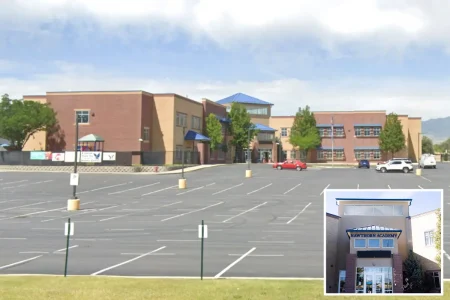National Park Service Removes Civil War Image Following Administration’s Push for “Positive History”
In a move reflective of broader efforts to reshape historical narratives at federal sites, the Trump administration recently directed the removal of a significant Civil War-era war image from a National Park Service location in Georgia. This decision aligns with the administration’s stated goal of promoting what officials describe as a “more positive view” of American history. The image, which had long been displayed as part of the site’s educational materials about the Civil War period, was apparently deemed inconsistent with the administration’s vision for how national historical sites should present America’s past to visitors.
The removal has sparked discussion among historians, park employees, and visitors about the role of national parks and historical sites in presenting accurate, comprehensive accounts of American history—including its most difficult chapters. Civil War historians note that war imagery, while often graphic and disturbing, provides crucial context for understanding the devastating reality of America’s bloodiest conflict. National Park Service employees, who typically operate with significant professional autonomy in designing educational displays, have expressed concern about what some see as political interference in historical interpretation at sites meant to educate the public about pivotal moments in the nation’s development.
The directive comes amid a broader push by the administration to influence how American history is taught and presented at federally managed sites and in educational settings. Officials have expressed concerns that too much emphasis on slavery, indigenous displacement, and other difficult aspects of American history creates an overly negative impression of the country’s development. Advocates of this approach argue that historical presentations should focus more on American achievements, unity, and exceptional qualities, while critics counter that meaningful engagement with history requires honest confrontation with both triumphs and failures.
This particular case highlights tensions between competing views of the National Park Service’s educational mission. Traditionally, NPS sites have been expected to present historically accurate information based on scholarly consensus, even when that information reveals uncomfortable truths about American history. Park rangers and historians within the system typically emphasize that understanding complex historical realities—including painful episodes like the Civil War—helps visitors appreciate the full context of American development and the progress made over time. The administration’s intervention suggests a different vision, where historical sites might emphasize more uplifting narratives.
For the Georgia site in question, the removal creates practical challenges for staff who must now reconsider how to educate visitors about the Civil War without some of the primary visual evidence that has traditionally been used to illustrate its reality. Visitors have reported mixed reactions, with some appreciating a less graphic presentation and others concerned about historical sanitization. Local historians worry that removing powerful visual evidence of war’s devastation might diminish visitors’ understanding of why the Civil War remains such a pivotal and consequential chapter in American history.
The situation raises broader questions about historical interpretation at public sites during times of political polarization. Professional historians generally emphasize that meaningful engagement with the past requires confronting both inspiring achievements and difficult truths—and that this comprehensive approach ultimately strengthens rather than weakens civic understanding. As federal agencies navigate these tensions, the fundamental question remains: what responsibility do national historical sites have to present complete historical narratives, and who should ultimately determine how American history is presented to the public at federally managed locations?









